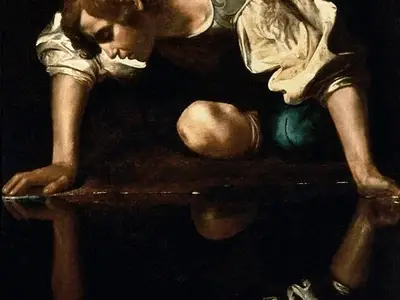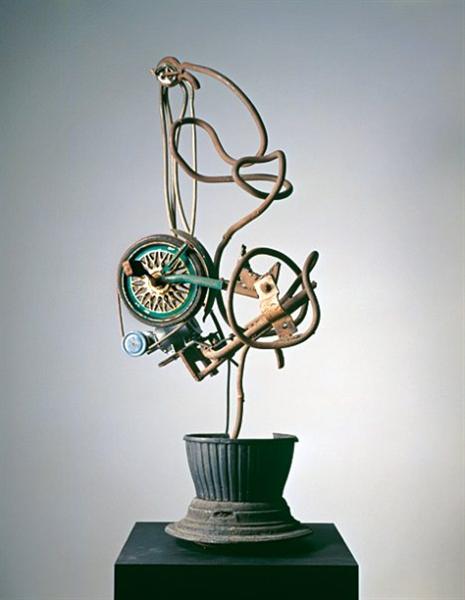Title of Artwork: “Narcissus”

Artwork by Caravaggio
Year Created 1599
Summary of Narcissus
The Italian Baroque maestro Caravaggio painted Narcissus between 1597 and 1599. It is currently on display at the Galleria Nazionale d’Arte Antica in Rome.
Since 1916, when it was first assigned to Caravaggio by art historian Roberto Longhi, the painting has been widely misattributed to other artists. This is one of just two Caravaggios on the subject of Classical mythology that have survived to the present day, albeit this is more a result of chance than anything else about the artist’s output.
All About Narcissus
Ovid describes Narcissus in his poem Metamorphoses as a gorgeous young man who falls in love with his own reflection. He succumbs to his obsession, dies, and crosses the River Styx without ever taking his eyes off of his own reflection (Metamorphoses 3:339-510).
Dante (Paradiso 3.18-19) and Petrarch (Narcissus and the Kiss) are just two examples of authors who retell or relate to the myth of Narcissus (Canzoniere 45-46).
The likes of Cardinal Francesco Maria del Monte and the financier Vincenzo Giustiniani, among others, were collectors that Caravaggio was circulating with during this time, and they had heard the tale. Poet Giambattista Marino, a friend of Caravaggio’s, has described Narcissus in a poem.
It was the Renaissance scholar Leon Battista Alberti who posited that the narrative of Narcissus held special allure for creative types: “It is said that Narcissus was the first painter.
A picture is nothing more than an artistic embrace of the water’s surface.”
Caravaggio depicted a young man gazing at his own warped reflection in a pool of water while wearing an expensive brocade doublet.
There’s a sense of deep melancholy in this artwork since Narcissus is seen in a self-referential loop, stuck in a circle with his reflection and surrounded by blackness.
Tommaso Stigliani it, a literary critic from the 16th century, summed up the current understanding of the myth of Narcissus, writing that it “clearly depicts the terrible end of those who love their goods too much.”
Information Citations:
En.wikipedia.org, https://en.wikipedia.org/.






















